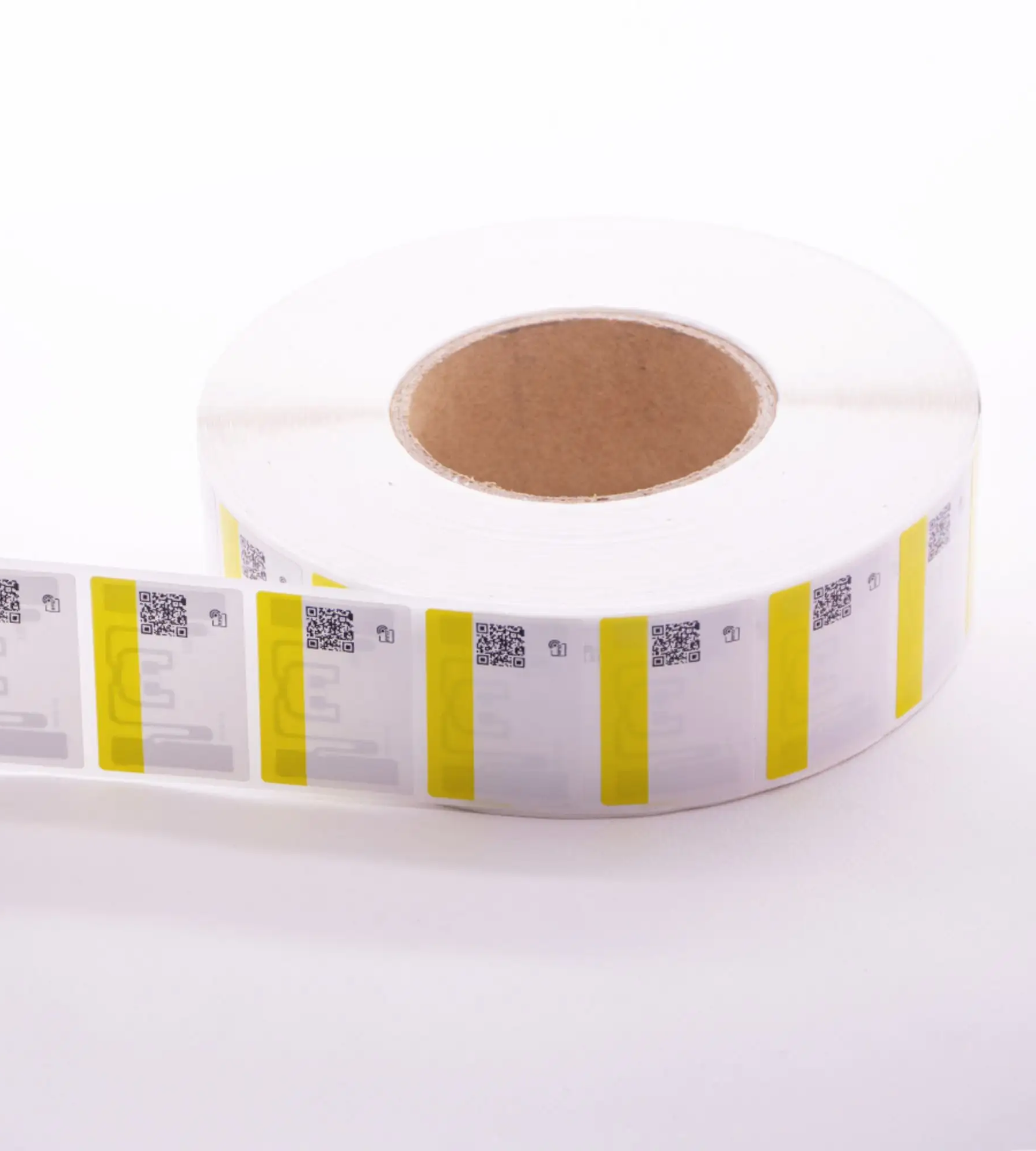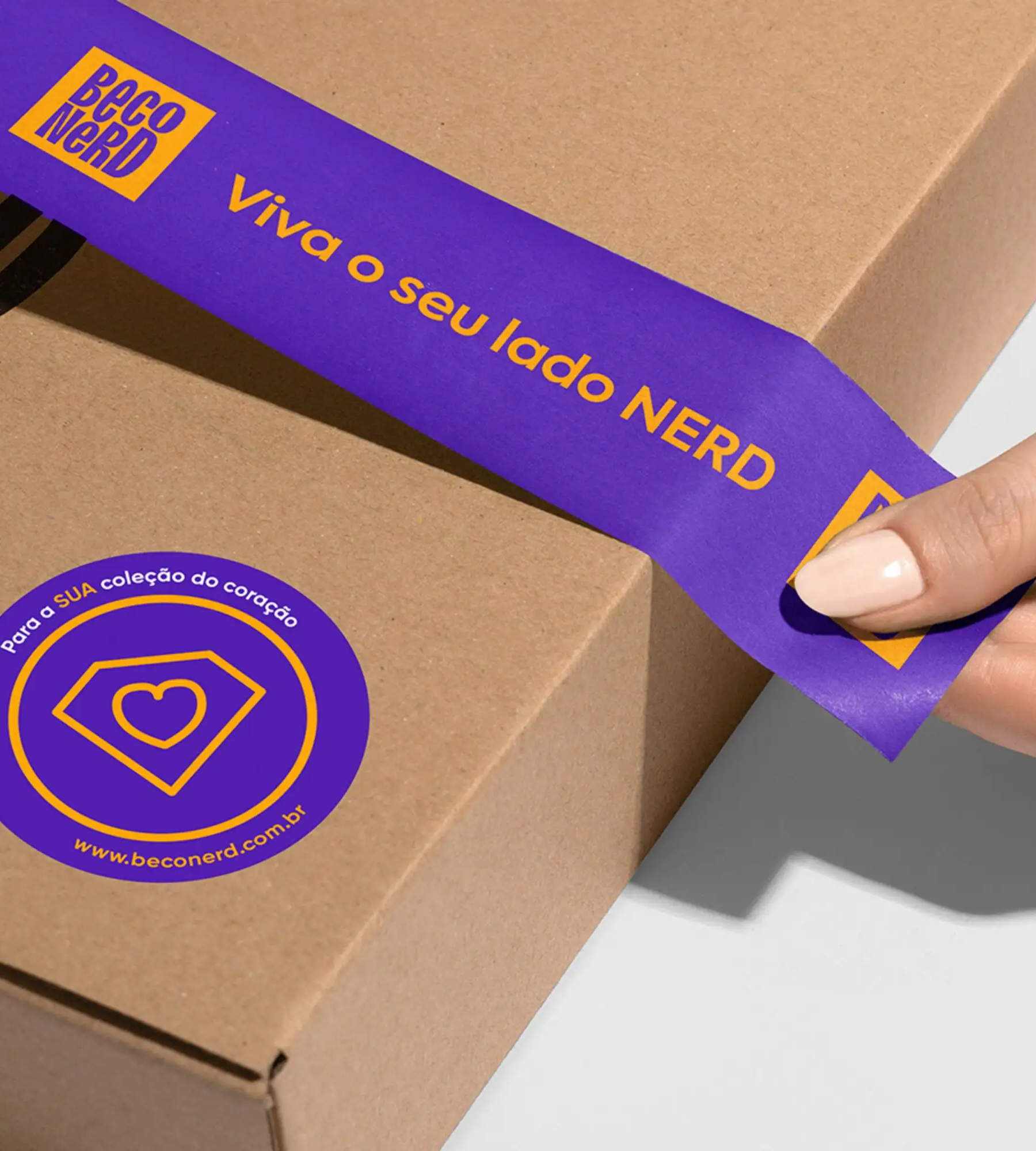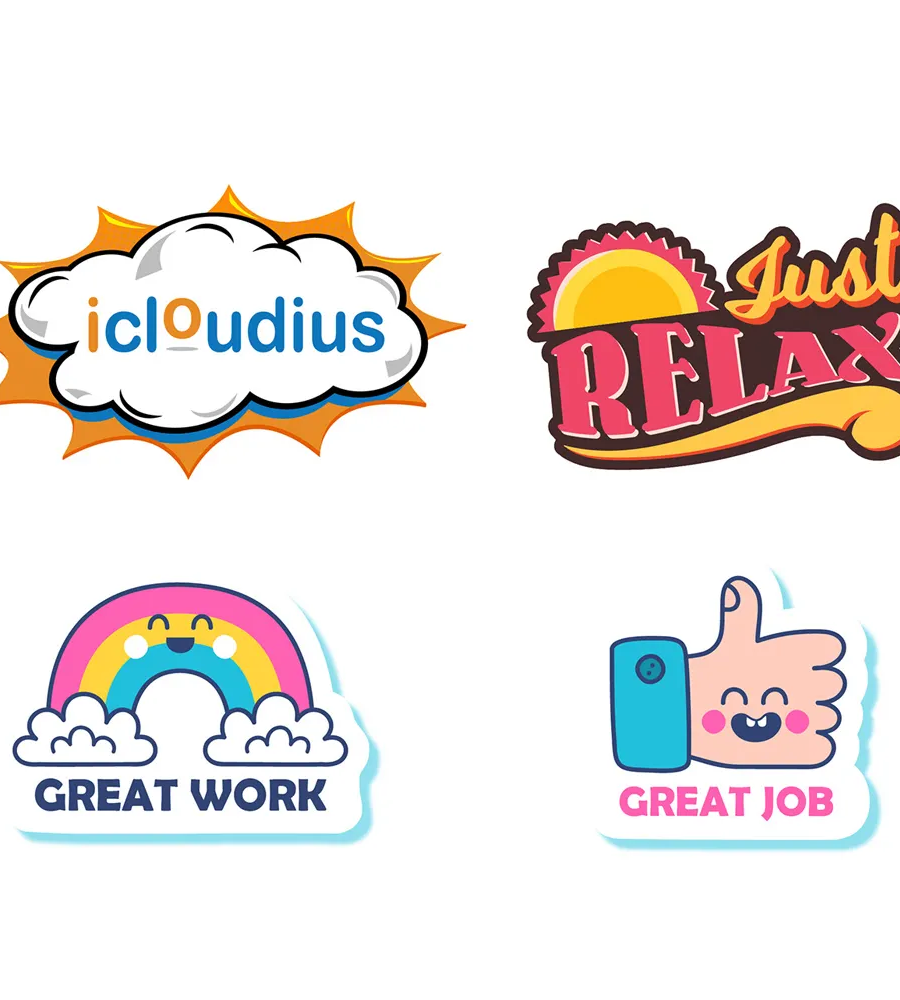
Trasforma il tuo branding con adesivi personalizzati progettati appositamente per te. I nostri adesivi di alta qualità sono perfetti per un utilizzo personale o aziendale, offrendo durata e colori vivaci. Crea un design unico che si distingue e cattura l'attenzione del tuo pubblico.

Soluzioni su misura - questo è ciò di cui si tratta con le etichette personalizzate. Non solo ti permettono di migliorare l'identità del tuo marchio, ma offrono anche l'opportunità di comunicare con il pubblico di riferimento in modo più efficace. Sappiamo quanto sia importante per un adesivo non solo rappresentare la tua azienda, ma anche risuonare con i suoi potenziali clienti. Per questo motivo, il nostro processo di progettazione inizia identificando i requisiti specifici di ogni cliente. Che queste etichette verranno utilizzate per etichettare prodotti, promuovere eventi o per esigenze personali; offriamo diverse forme, dimensioni e finiture in modo che possano svolgere al meglio il loro compito e avere un aspetto accattivante allo stesso tempo. Inoltre, tutti i materiali utilizzati per la produzione sono di altissima qualità, il che garantisce la loro durata anche se esposti all'aperto per lunghi periodi, impedendo sbiaditure dei colori vivaci nonostante il passare dei giorni o delle settimane, rimanendo intatti insieme alle altre parti e quindi raggiungendo gli obiettivi desiderati in modo efficace, diventando regali memorabili durante un evento in cui sono stati distribuiti o altrimenti diventando segni di identificazione unici in qualsiasi altra occasione in cui vengono distribuiti tra persone che le hanno già viste in precedenza.
Inoltre, i nostri adesivi personalizzati sono realizzati per lasciare un'impressione duratura. Puoi scegliere tra numerosi modelli attraenti o crearne uno da te utilizzando i nostri strumenti di progettazione facili da usare - qui non ci sono limiti! E se hai bisogno di aiuto durante il processo, non esitare a contattarci in qualsiasi momento perché abbiamo professionisti pronti e disponibili proprio per te! Quindi non accontentarti del normale - lascia che ti aiutiamo a creare adesivi straordinari che faranno girare teste ovunque vengano applicati o visti in giro per la città oggi, domani e per sempre...

Nel mondo attuale, che è più consapevole dei problemi ambientali rispetto a prima, la sostenibilità riveste un ruolo fondamentale. Per questo motivo disponiamo di adesivi personalizzati sostenibili, progettati per essere amichevoli all'ambiente senza compromettere la qualità elevata. Realizzati con materiali riciclati, i nostri adesivi ecologici utilizzano inchiostri a base di soia, meno dannosi per l'ambiente rispetto a quelli convenzionali derivati dal petrolio. Questi adesivi non solo ti permettono di promuovere il tuo marchio in modo etico, ma attraggono anche clienti sensibili alle questioni ecologiche e appassionati della conservazione delle risorse naturali. Se hai intenzione di organizzare un evento tenendo presenti aspetti ecologici; se la tua azienda opera seguendo principi di sostenibilità o semplicemente vuoi ridurre l'impronta ecologica, scegliere questi etichette adesive personalizzate sarebbe perfetto. Scegliendo le nostre alternative ecologiche, dimostri il tuo impegno verso la tutela dell'ambiente mentre raggiungi risultati eccellenti in termini di qualità. Lavoriamo insieme per creare design di adesivi trendy e sostenibili che comunicheranno chiaramente i valori del tuo marchio, proteggendo al contempo il futuro del nostro pianeta.

Adesivi unici sono un metodo straordinario per associare un tocco personale a qualsiasi occasione, sia essa un matrimonio o un incontro aziendale. Il nostro team di designer collaborerà strettamente con te per comprendere l'idea generale e l'obiettivo dell'evento, assicurandosi che gli adesivi creati siano i più adatti. Possiamo personalizzare adesivi per souvenir, ornamenti o anche oggetti promozionali, con molte opzioni disponibili. Puoi scegliere tra diverse forme, dimensioni o finiture che non solo si integreranno perfettamente, ma miglioreranno anche l'eleganza del tuo evento, lasciando un'impronta indelebile nella mente di ogni ospite che partecipa. Questi adesivi sono realizzati con materiali di altissima qualità, quindi non perdono mai il loro fascino durante l'evento e nemmeno dopo; inoltre, lavoriamo molto velocemente in modo che tu possa riceverli con ampio anticipo rispetto all'inizio del tuo evento. Lasciaci aiutarti a creare ricordi di questo giorno speciale attraverso adesivi unici, proprio come l'evento stesso!

Se parliamo di adesivi, la loro durata diventa il fattore più importante. I nostri adesivi personalizzati sono realizzati in materiali di alta qualità che possono resistere a qualsiasi tipo di tempo e a numerosi utilizzi. Questa robustezza aiuta a mantenere l'aspetto e le funzioni degli adesivi, rendendoli adatti sia per l'uso all'interno che all'esterno. Non importa se hai bisogno di essi per i pacchetti dei tuoi prodotti, articoli promozionali o scopi personali; continueranno a funzionare correttamente con il passare del tempo. Offriamo diverse finiture, come opaca, lucida o addirittura impermeabile, così puoi scegliere ciò che meglio si adatta alle tue esigenze. Inoltre, grazie alle nostre tecnologie di stampa avanzate, tutti i colori diventano più vividi mentre i dettagli rimangono sufficientemente nitidi, il che significa che tutto appare esattamente come dovrebbe essere secondo l'idea di progettazione. Scegli i nostri adesivi personalizzati longevi se vuoi che le persone non dimentichino il tuo messaggio o il tuo marchio per anni, poiché rimarranno sempre accattivanti da qualche parte nei paraggi!

Shenzhen DUEN Technology Co., Ltd. è una società specializzata nel campo della stampa, che vanta con orgoglio una decade di esperienza nel settore. In qualità di fabbrica di stampa diversificata, siamo ampiamente coinvolti in vari settori come la stampa offset, la stampa digitale e la stampa di imballaggi, fornendo soluzioni di stampa complete.
Il nostro orgoglio risiede nei nostri servizi di progettazione professionale che si estendono su più settori, tra cui la stampa di libri, la stampa di braccialetti, la stampa pubblicitaria e il design degli imballaggi. Sfruttando il nostro team creativo e la tecnologia avanzata, ci impegniamo a fornire prodotti di stampa altamente personalizzati per soddisfare le diverse esigenze di diversi settori.
Per quanto riguarda le attrezzature di produzione, possiediamo grandi stampanti Heidelberg, macchine per il taglio a stampo ad alta precisione e macchine di stampa digitale avanzate. Investiamo continuamente nella ricerca e nello sviluppo della tecnologia di stampa per garantire la nostra posizione di leader nel settore.
Uno dei nostri valori fondamentali è il controllo rigoroso della qualità della produzione. Dalla fase di progettazione al processo di produzione, monitoriamo costantemente ogni fase per garantire che i clienti ricevano prodotti di stampa di eccellente qualità. Allo stesso tempo, ci concentriamo sulla responsabilità ambientale, utilizzando ampiamente materiali eco-compatibili, utilizzando fonti di energia rinnovabili e ottenendo la certificazione del sistema ambientale, adempiendo attivamente alla nostra responsabilità sociale fornendo ai clienti una qualità di stampa eccezionale.
Siamo orgogliosi di servire le aziende Fortune 500 e di collaborare con vari eventi su larga scala, tra cui festival musicali, bar, carnevali, parchi di divertimenti e altro ancora. Centrati sulle esigenze dei clienti, adattiamo i prodotti di stampa per soddisfare le loro aspettative, dedicati a soddisfare le diverse esigenze di diversi settori.
Non vediamo l'ora di stabilire un rapporto di cooperazione con voi, creando congiuntamente un'esperienza di stampa eccezionale. Se avete bisogno di stampare, non esitate a contattarci; forniremo con tutto il cuore soluzioni di stampa professionali ed efficienti.
Qualità senza pari del braccialetto con diverse opzioni di personalizzazione.
Tariffe e sconti accessibili per gli acquisti di grandi volumi.
Spedizioni puntuali e costanti per tutti gli ordini in blocco.
Supporto reattivo e comunicazione fluida in tutto.
Puoi fare realizzare adesivi personalizzati tramite diversi servizi di stampa online come Vistaprint, Sticker Mule e Zazzle. Queste piattaforme ti permettono di caricare i tuoi propri disegni e scegliere tra varie dimensioni, forme e finiture. Le stamperie locali e i negozi di forniture ufficiali come Staples o Office Depot offrono inoltre servizi di stampa di adesivi personalizzati. In aggiunta, siti web come Etsy hanno venditori che si specializzano in disegni di adesivi personalizzati.
Per realizzare adesivi personalizzati, inizia a progettare la tua immagine utilizzando software di grafica come Adobe Illustrator o Canva. Stampa il tuo disegno su carta adesiva usando una stampante inkjet o laser. Per una maggiore durata, usa carta impermeabile e resistente agli UV. Taglia gli adesivi con forbici o un coltello da intaglio. Alternativamente, usa una macchina per tagliare come una Cricut per forme precise. Applica una pellicola laminata trasparente sopra il disegno per una protezione extra. Infine, stacca e incolla i tuoi adesivi personalizzati dove desiderato.
Per fare realizzare adesivi personalizzati, segui questi passaggi:
I tuoi adesivi personalizzati verranno consegnati in base alla tabella di produzione del fornitore.
Per creare adesivi personalizzati, segui questi passaggi:
Per progetti di alta qualità o con disegni complessi, considera l'uso di un servizio di stampa professionale.
